States of Matter Teaching Resources
Explore the changing states of matter with worksheets, experiments, activities and more — all created by teachers for your lesson plans!
This collection of science resources provides you everything you need to teach students the properties of solids, liquids and gasses and examine how matter changes its state.
New to teaching this section of the science curriculum or just looking for some handy tips and tricks? Read on for a primer from our teacher team, including answers to some of students' frequently asked questions!
How Many States of Matter Are There?
This is a fairly common question from students, so we'll get started right here — there are three main states of matter:
- Liquid
- Solid
- Gas
Your students may have heard that there's a fourth state of matter, and technically they are right! That's why we often refer to the 'three main states' of matter, rather than simply saying 'three states of matter.'
Plasma is a substance that we get when a gas is electrically charged. It's thick and soupy — so it's neither liquid nor solid — and that's why it is often referred to as the 'fourth state of matter.'
So why do we focus on the other three? Simple — plasma is in abundance in our galaxy, but it's far less prevalent down here on Earth!
What Is a Liquid State of Matter?
Liquid is a state of matter your students are pretty familiar with. After all, their favourite drinks, the water in the swimming pool and the rain falling down from the sky are all liquid states of matter.
But what, exactly, is a liquid?
By definition, a liquid is a state of matter that has a definite volume but no definite shape. The particles in a liquid are close together, but unlike those in a solid, they can move and flow past one another.
Liquids can also take the shape of their container — like milk in a cereal bowl!
What Is a Solid State of Matter?
Solids are all around us, from the chairs we sit on to the walls of the classroom, but how do you explain what a solid state of matter is to your class? Try this definition:
A solid is a state of matter that has a definite shape and volume.
The particles in a solid are tightly packed together and unlike those in other states, they do not move freely.
Solids can be hard — like the top of the desk or a rock. They can also be soft, like a pillow or a ball of playdough.
What Is a Gas State of Matter?
We've got just one main state of matter left — gas. Gas is all around us, but it's not always seen, so students may not realize just how much interaction they have with matter in this state!
Here's how we describe gas to students:
A gas is a state of matter that has no definite shape or volume. The particles in a gas are spread out and they move freely. These particles fill will up any space available.
Gases are often invisible like the air we breathe. Sometimes gas can be seen, however, such as the smoke coming from a campfire.
- Plus Plan
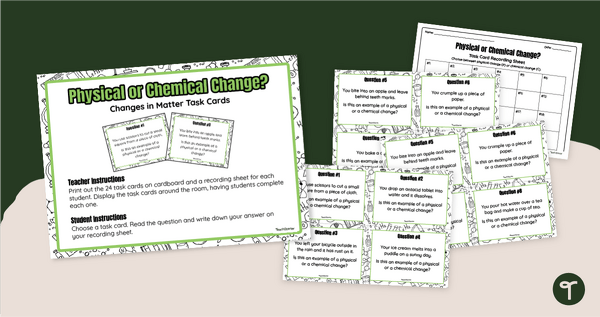
Physical or Chemical Change? - Task Cards
Identify examples of physical and chemical changes in matter with a set of printable task cards.
- Plus Plan
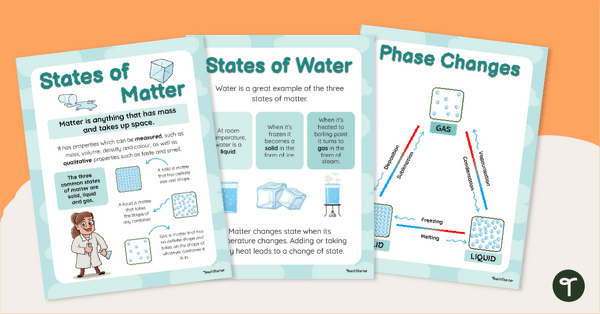
States of Matter Poster Pack
Cover the basics of the states of matter with this set of posters.
- Plus Plan
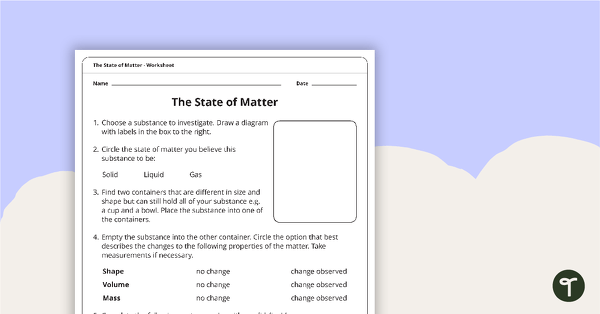
Year 4 States of Matter - Nonfiction Reading Comprehension
Teach science and reading skills with a set of printable Year 4 Reading Worksheets about the three states of matter.
- Plus Plan
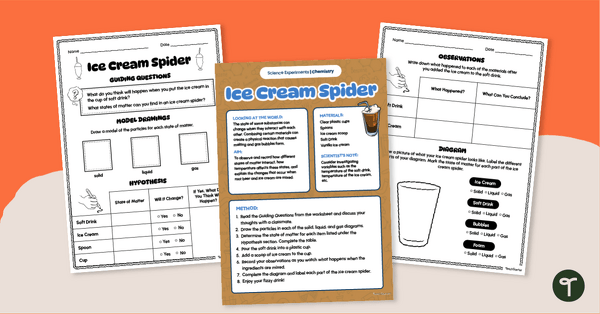
Making an Ice Cream Spider – Matter Experiment
Have fun making ice cream spiders in this exciting Changing States of Matter Science Experiment for Kids.
- Plus Plan
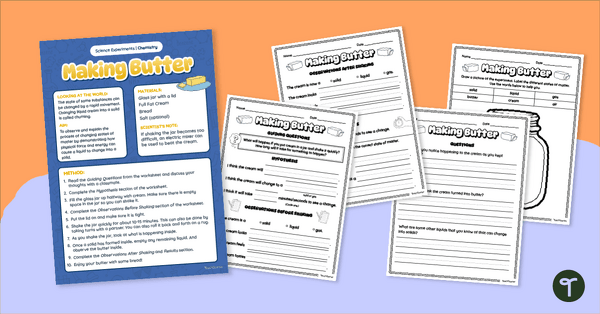
Making Butter in a Jar – States of Matter Lab Activity
Have fun making butter in a jar in this exciting Changing States of Matter Lab Activity.
- Plus Plan
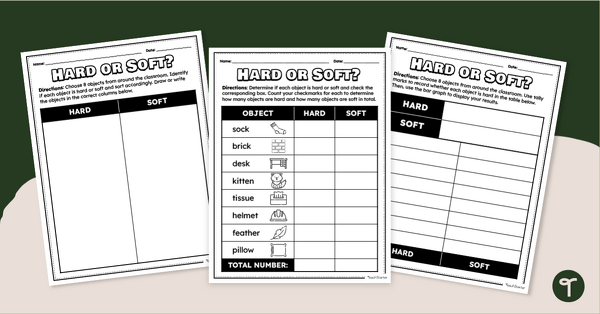
Hard or Soft? Describing Matter Activity Sheets (F-1)
Explore the world of matter with Describing Matter Activity Sheets for early years students.
- Free Plan
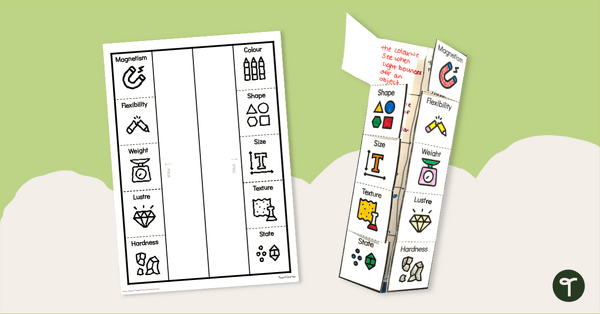
Physical Properties of Matter Vocabulary Foldable
Introduce your students to observable and measurable properties of matter with a printable Properties of Matter Vocabulary Foldable.
- Plus Plan
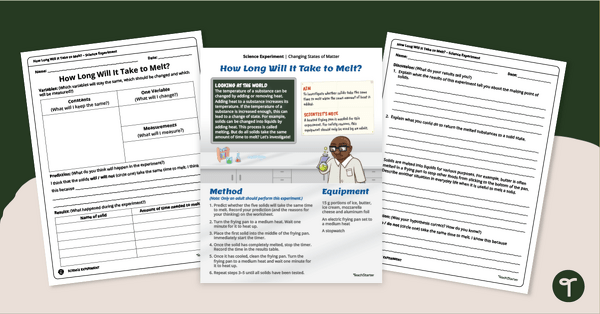
Changing Matter Experiment – How Long Will It Take to Melt?
Explore how solids change into liquids with an exciting hands-on Matter science experiment.
- Plus Plan
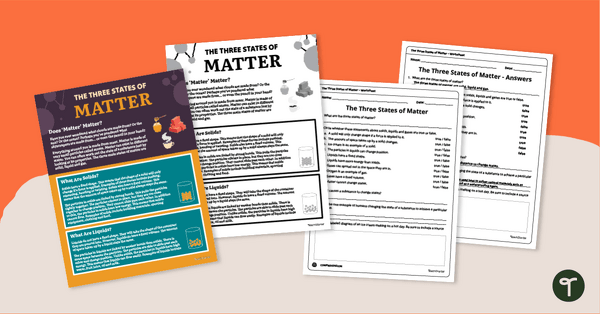
The Three States of Matter – Year 5 Reading Worksheets
Use a Year 5 Reading Comprehension passage and worksheet to teach your students about the three states of matter.
- Plus Plan

Changes in Matter Due to Heat - Worksheets
Identify examples of reversible and irreversible changes caused by heat with a pair of Changing States of Matter Worksheets.
- Plus Plan
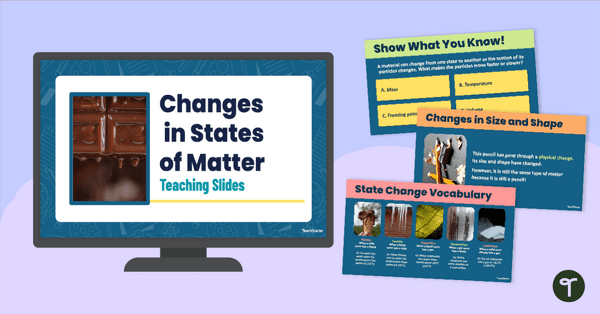
Changes in States of Matter Teaching Slides
Teach your students about the changes in states of matter with an engaging interactive teaching slide deck.
- Plus Plan
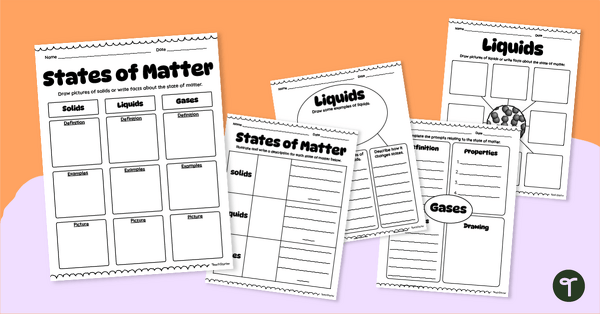
States of Matter Graphic Organiser Pack
Use our States of Matter graphic organisers to help your students record what they have learned about the three forms of matter.
- Plus Plan
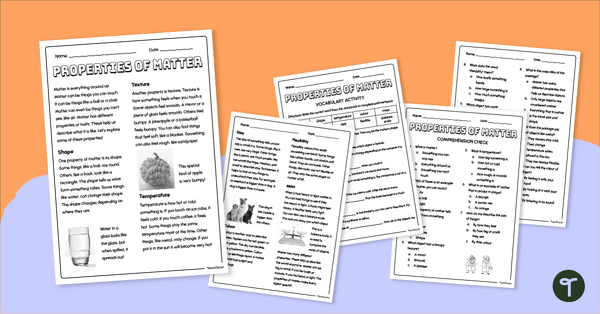
Properties of Matter Reading Comprehension Pack (Year 3)
Read and discover the properties of matter with a set of Year 3 Reading Comprehension Worksheets.
- Plus Plan
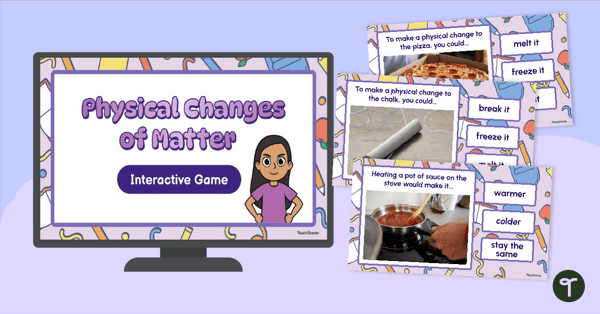
Physical Changes in Matter Interactive Game
Observe and predict physical changes in matter with an engaging, interactive Science Game!
- Plus Plan
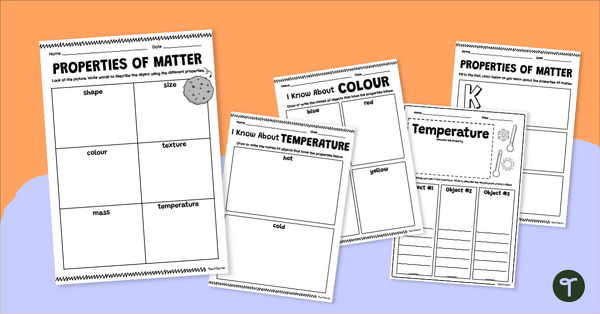
Properties of Matter Graphic Organiser Pack
Use printable graphic organizers to help your students record what they have learned about the different properties of matter.
- Plus Plan
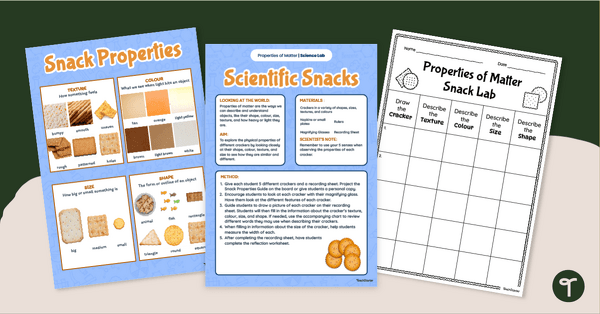
Observing Matter – Edible Science Experiment
Discover the observable properties of matter with an exciting edible science experiment!
- Plus Plan
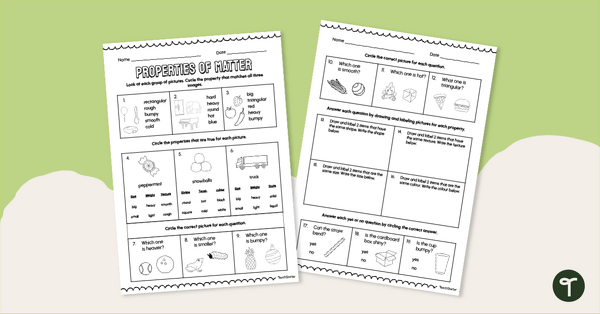
Observing Properties of Matter Quiz
Assess students’ knowledge of basic observable properties of matter with a printable Properties of Matter quiz.
- Plus Plan
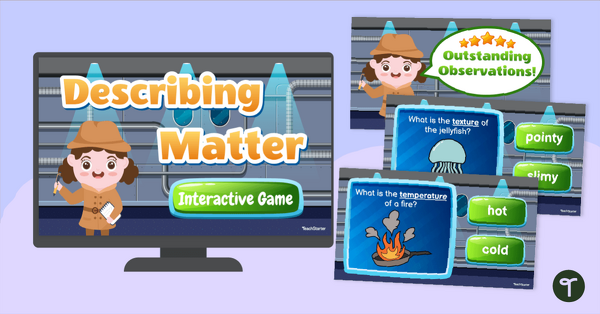
Describing Matter Interactive Game
Practise describing matter with an engaging science game for early years students.
- Free Plan
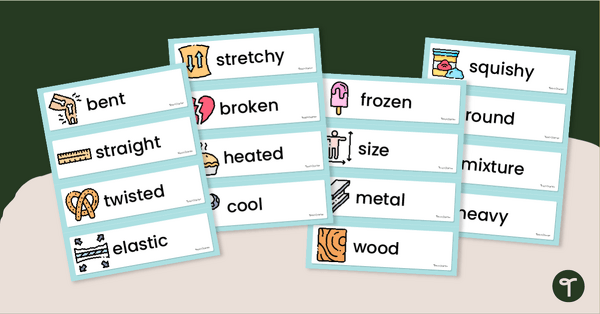
Describing Matter – Word Wall
Help your students learn to describe matter using physical properties with an illustrated matter word wall.
- Plus Plan
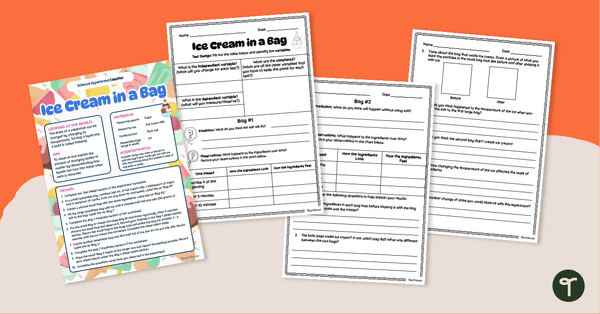
Removing Heat – Ice Cream in a Bag Experiment
Make Ice Cream in a Bag and discover how removing heat causes matter to change states.
- Plus Plan
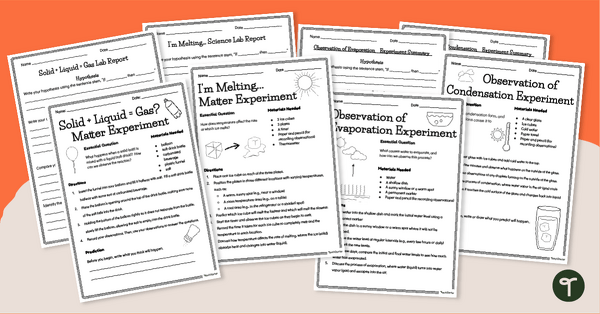
Matter States and Changes Science Lab Activity Pack
Discover the states and changes of matter with a printable pack of Science Lab Activities for Kids!
- Plus Plan
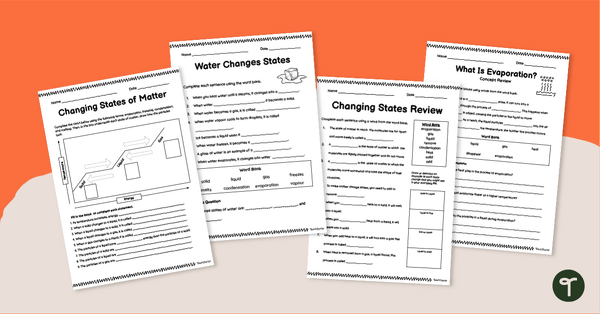
Changing States of Matter Worksheets
Introduce your students to the changing phases of matter with a set of printable science worksheets.
- Plus Plan
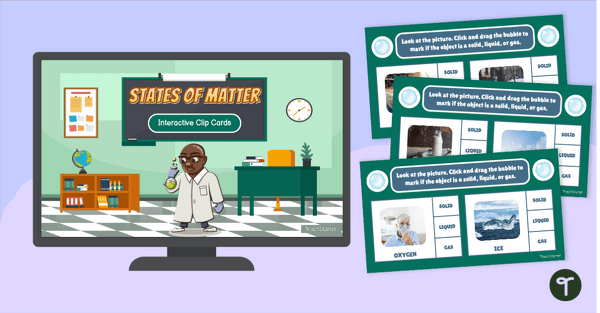
States of Matter Interactive Clip Cards
Drag and drop to identify the three states of matter with a set of interactive clip cards.
- Plus Plan
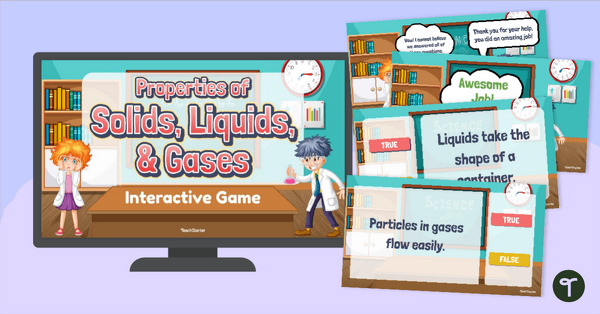
Properties of Solids, Liquids, and Gases Interactive Game
Discover the properties of solids, liquids, and gases with an engaging Properties of Matter Interactive Game.
- Plus Plan
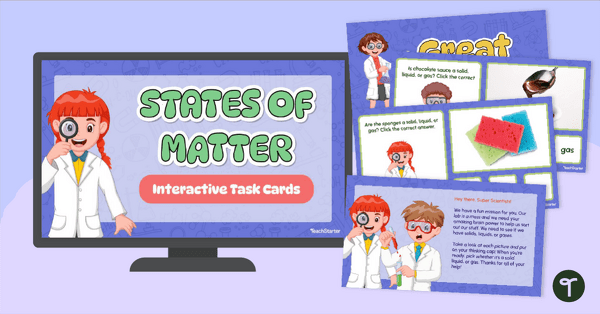
States of Matter Interactive Task Cards
Identify examples of the 3 states of matter with a set of self-checking interactive task cards.
- Plus Plan
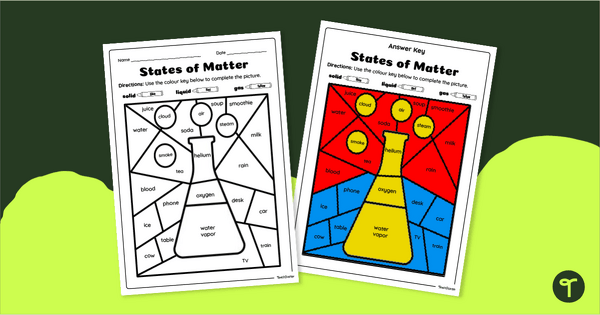
States of Matter - Colour by Code Worksheet
Engage your students and have fun identifying the states of matter with a colour-by-code worksheet.
- Plus Plan
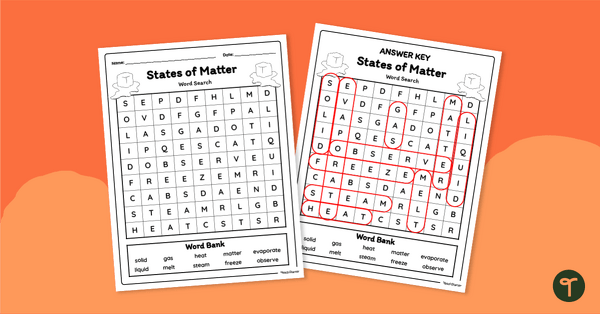
States of Matter Word Search - Lower Years
Use a States of Matter word search to introduce your early learners to new academic vocabulary.
- Plus Plan
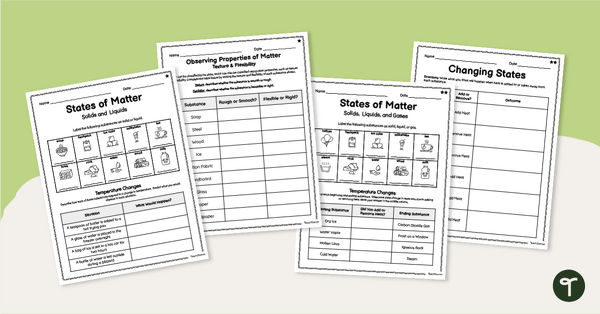
Year 3 Matter Worksheets - Properties & Changes
Reinforce your students' understanding of the properties of matter and changes in state with a set of printable differentiated Matter Worksheets.
- Plus Plan
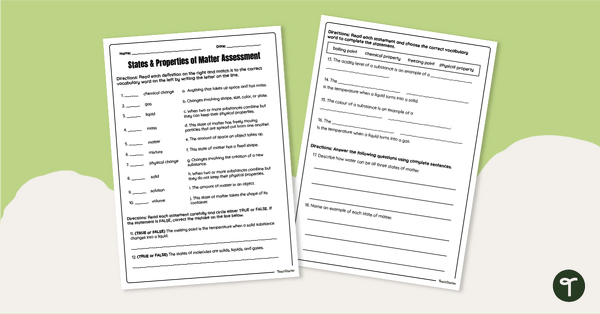
States & Properties of Matter Assessment
Assess your students knowledge of the states and properties of matter with a comprehension Matter Assessment.
- Plus Plan
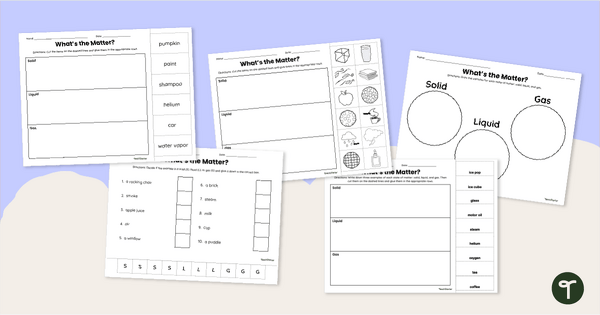
What's the Matter? Worksheets
Help your students differentiate between states of matter (solid, liquid, and gas) with a set of printable ‘What’s the Matter?’ Cut and Paste worksheets.
- Plus Plan
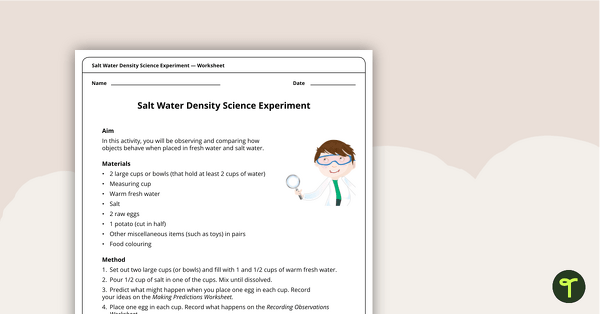
Salt Water Density Experiment
A hands-on science experiment about salt water density.
- Plus Plan

Matter Matters!